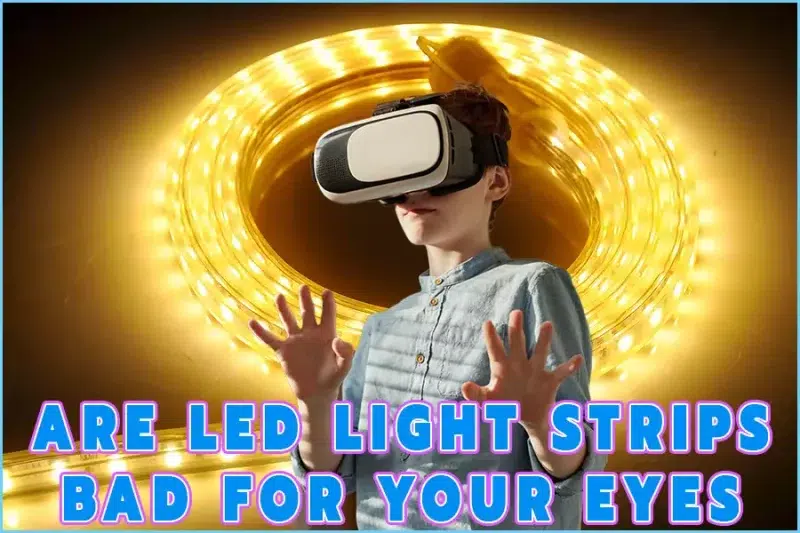LED (Light Emitting Diode) light strips have become increasingly popular. In recent years as a way to add lighting to various spaces, including homes and offices. While they offer many benefits, such as energy efficiency and versatility. Some people are concerned about their impact on eye health. In this article, we will examine whether LED light strips are bad for your eyes. What you can do to minimize any potential negative effects.
First, it’s important to understand how LED lights work. LED lights are made up of semiconducting materials that emit light when an electrical current is passed through them. They are highly efficient and long-lasting, which is why they are often used for lighting applications. Unlike traditional incandescent bulbs, LED lights do not produce heat. So they are cooler to the touch and safer to use.
In terms of eye health, it’s important to understand. That all forms of artificial light can have some impact on our eyes. This is because light exposure can affect our circadian rhythms, which regulate our sleep-wake cycle and other bodily functions. Exposure to bright light in the evening can interfere with the release of the sleep hormone melatonin and make it harder to fall asleep at night.
LED light strips, in particular, are often used for task lighting. Such as under-cabinet lighting in kitchens or reading lights in bedrooms. This type of light is typically bright and directed. Which can be hard on the eyes if used for extended periods of time. Additionally, the blue light emitted by LED lights has been shown to affect our circadian rhythms, making. It is even more important to be mindful of our exposure to these lights.
However, there is currently no evidence to suggest that LED lights are inherently harmful to our eyes. The American Academy of Ophthalmology has stated. That LED lights are safe for use in the home and office, as long as they are used appropriately.
So, what can you do to minimize the impact of LED light strips on your eyes? Here are some tips:
Avoid prolonged exposure:
If you use LED light strips for task lighting, try to limit your exposure to them. Turn them off or dim them when you are not using them, and avoid looking directly at the lights for long periods of time.
Use warm-toned LED lights:
LED lights come in a variety of color temperatures, from warm white to cool white. Warm-toned LED lights emit a more yellow-toned light, which is easier on the eyes than cool white LED lights.
Invest in LED lights with adjustable brightness:
Some LED lights come with adjustable brightness levels. Which can be useful if you want to use them for task lighting. This way, you can adjust the brightness to a level that is comfortable for your eyes.
Take breaks:
If you are using LED light strips for an extended period of time, take breaks and look away from the lights regularly. This will give your eyes a chance to rest and adjust to the surrounding light levels.
In conclusion, LED light strips are not inherently harmful to your eyes. But it is important to use them in moderation and to be mindful of the type of light they emit. If you are concerned about the impact of LED lights on your eyes, consider the following. The tips listed above to minimize any potential negative effects. As with any artificial light source. Tt is always a good idea to listen to your body and take breaks if you start to experience eye strain or discomfort.

